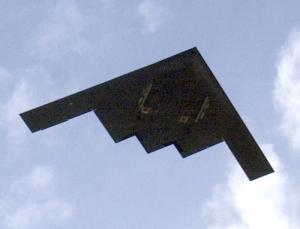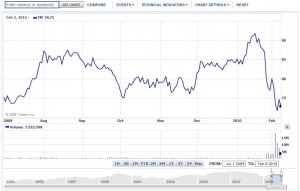Violence and conflict have been a nature of human life throughout history. From the beginning, Starting with simple weapons, people have developed ever more advanced methods to kill one another. Technology has dominated warfare since the early 1900s, and an astounding 190 million people may have been killed during the 25 biggest conflicts of the 20th century.
Today guided weapons, like “smart” bombs dropped by stealth bombers, coupled with space-based sensors and precision satellite navigation, provide decisive advantages in conventional warfare. In this high-spending game, less capable opponents are soon reduced to guerrilla tactics, and human cost of war remains high.
The US has embraced Full Spectrum Dominance, the belief that superior technology in all fields guarantees victory, though critics disagree. This has led to ever more sophisticated and expensive aircraft and a proliferation of unmanned systems, including robot aircraft to attack targets. Future plans may include swarms of flying robots, while an existing desert race for driverless vehicles may pave the way for autonomous supply vehicles.
The infantry of the future may be kitted out with powered exoskeletons and accompanied by robotic pack mules.
Advanced technology
The future battlefield might also extend to space, with orbiting arsenals and high-altitude aero-spaceplanes, though robot spacecraft capable of intercepting satellites may be intended more to protect the military’s investment in Global Positioning Systems and other orbital assets.
As opponents who lack high technology are reduced to hiding in the face of ever-increasing firepower, new weapons are being developed to attack the deepest bunkers, including “supercavitating” warheads and burrowing bombs.
One of the most ambitious schemes is to build a shield to defend the US from ballistic missiles. This would rely on a combination of airborne lasers and missiles, but the laser programme has proved more challenging than expected, as has hitting a missile with another missile. But lasers have succeeded in shooting down tactical rockets and even artillery shells.
Neutrino beams that could travel through the Earth and zap nuclear missiles on the other side of the planet have even been envisioned.
However, many critics doubt whether a missile defence scheme could work, and suggest that intercepted warheads might fall on Europe, Canada or middle America.
Less lethal
The debate between weapons developers and their critics is also intense in the field of non-lethal (or less-lethal) weapons, intended to incapacitate without killing. Controversial Taser guns
The US military have developed the Active Denial System, or “people zapper”, which uses a microwave beam to inflict pain without damage, as well as the Pulsed Energy Projectile – a non-lethal laser causing incapacitating pain. But there are fears that such weapons could be abused.
Lasers have also been proposed as dazzle weapons, such as the veiling glare laser, the portable PHASR and the helicopter-mounted ACCM. In all cases there have been concerns over safety and eye damage.
Non-lethal chemical weapons include “calmatives” such as the anaesthetic derivative disastrously used in a Moscow theatre siege. US chemical research has included such unlikely ideas as a weapon to disrupt enemy troops by turning them temporarily homosexual. There are also serious legal questions about chemical weapons treaties.
While some non-lethals have spread beyond the military – such as the acoustic LRAD, used to repel pirates – there are continuing concerns too little is known about their effects.
Conflict aftermath
Although technologists may strive for “surgical” strikes and quick victories, war leaves many problems behind for people, agriculture, the environment – and even the preservation of history. The WHO estimates that 731,000 people were killed by war and violence worldwide in 2002 alone.
Landmines are a particular issue, as there is no safe, quick or cheap method to deal with the millions of devices left fromprevious conflicts. Technological solutions to de-mining include special arrow projectiles, lasers and NMR scanners. There are moves to get around the Ottawa convention banning landmines, by replacing them with non-lethal devices or weapons that can tell troops from civilians.
Unexploded weapons are lingering threats. These days they are more likely to be cluster bombs, but an incredibly dangerous cargo ship of unexploded bombs is sitting in a sandbank in the River Thames estuary, UK.
Another war hangover is radioactive depleted uranium. This is used in anti-tank weapons and remains on the battlefield years later. Although the risks are still uncertain, there are moves to replace it with tungsten.
The mental after-effects of war are becoming more fully appreciated, with a growing understanding of post traumatic stress disorder. Researchers are also finding out more about debilitating effects of sleep deprivation on soldiers and other factors which contribute to “friendly fire” incidents.
Mass destruction
Perhaps the worst after-effects are left by nuclear weapons. The atom bomb was first used on Hiroshima, Japan, in 1945, where radiation effects persist – and massive arsenals of nuclear weapons were amassed during the cold war.
The original five nuclear powers (the US, UK, France and the former Soviet Union) attempted to control proliferation, but were criticised for increasing their own arsenals at the same time. Following controversy, the US “bunker busting nuke” intended as a first-strike weapon against non-nuclear states, was eventually cancelled.
Now there are nine nuclear powers and there is concern over government secrecy regarding atomic tests and safe transport of warheads. Adding to that worry is the growing threat of “rogue states“, like North Korea, and terrorists.
There are also chemical and biological weapons of mass destruction. US authorities believe that Gulf war syndrome was caused by low-level exposure to chemicals during the 1991 war, but this remains controversial. Poison gases may also have damaged 30,000 British servicemen they were tested on prior to 1989. They are now banned by the Chemical Weapons Convention Treaty.
The threat of biological weapons remains. Although Saddam Hussein may never have possessed them, the US embarked on a programme to produce quantities of anthrax as a countermeasure.
History of war
Warfare is an integral part of human history and has been behind the rise and fall of many civilisations, from the Mayans to the Romans. Archaeologists have found evidence of ancient conflicts everywhere, from Mexico to Mesopotamia. More unusual finds are military propaganda from the days of the Pharaohs and the DNA trail left by marauding Vikings .
Religious disputes have been at the root of many historic conflicts – and some modern ones, in Israel and India, for example.
Chemistry has been tied up with warfare since the creation of gunpowder, and even peaceful chemical processes can be turned to making explosives. Defoliants were intended to harmlessly deprive guerillas of cover, but had longer term effects. Science generally has often been focused on military efforts, with 40% of all research output focused on weapons technology during the cold war.
Technology has often featured in attempts to mitigate the effects of weapons, from the original bullet-proof vest of 1893, to modern plans to protect airlines from surface-to-air missiles with microwaves; from providing electromagnetic armour for tanks to stopping torpedoes with pulses of sound.
More often the aim is to develop an unstoppable super-weapon, from a gigantic raft to carry Napoleon’s invasion force, to today’s centrifugal gun, which fires silent barrages of ball bearings, to burning bullets.
Expect the unexpected
Better camouflage, and even invisibility, are popular research avenues, and there have also been exotic ideas for radar invisibility. Though these are invariably matched with equally imaginative countermeasures.
Since the 1950s many of the strangest-seeming ideas have been sponsored by DARPA, the US Defence Advanced Research Projects Agency, who have recently backed remote-controlled sharks and rats as well as the robot world’s “wacky races“. But DARPA did also lay the foundations for the Internet, which now allows everyone to look at the latest plans for secret weapons.
Even the experts are startled by the ability of weapons technologists to produce results. “The bomb will never go off. I speak as an expert in explosives” US Admiral William Leahy declared before the Trinity test of the first atomic bomb.
Where will the next big breakthrough in military technology be? It might be in more super-explosives, micro-power generators, nanotechnology or quantum computing. But it may equally well be something completely unexpected…
Despite so much conflict, the biological roots of human violence remain elusive.
Source: Newscientist




